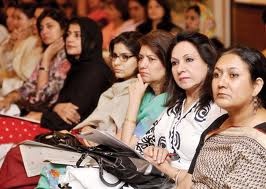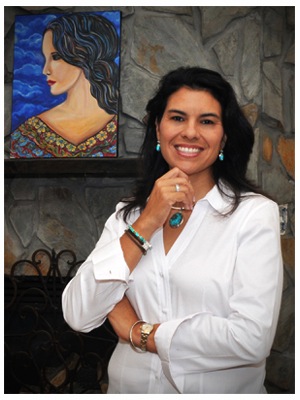A key premise of taking an explicitly inclusive approach to work-life issues is that people of different gender, social, cultural and racio-ethnic groups experience work-life challenges specific to their group.
 In my overview of research on work-life issues for women of color (see citation below), I’ve identified four types of work life challenges that can work differently for women of color than for employees who are part of the dominant group(s) (e.g., white men). These work-life challenges can occur for any individual, but are likely to occur more often for women and especially for women of color.
In my overview of research on work-life issues for women of color (see citation below), I’ve identified four types of work life challenges that can work differently for women of color than for employees who are part of the dominant group(s) (e.g., white men). These work-life challenges can occur for any individual, but are likely to occur more often for women and especially for women of color.
When compared to the experiences of employees in the dominant group(s), women of color experience work-life challenges related to:
- Status as a minority group member in many work organizations
- Gendered experience of adulthood (including childbearing) and their gendered social role expectations
- Connection to a ‘home’ cultural group whose values may or may not fit comfortably within the expectations of their work organizations.
These four issues for women of color include:
1. Women of color challenge commonly held stereotypes about “the ideal worker”.
“The ideal worker” is defined as a person who puts work quality and work commitments ahead of personal interests, and demonstrates “professional” behavior that prioritizes the interests of the work environment. Stereotypes about women in general, and especially stereotypes about women of color, suggest that women of color are less likely than men to display the kind of work quality and work commitment, and personal comportment at work, that create “the ideal worker”.
2. Women of color are hyper-visible.
Hyper visibility refers to the characteristic of being noticed simply because you stand out from the norm.
In organizations where the majority of employees are white men, women of color are hyper-visible. Anything that women of color do at work, and particularly the flexible work arrangements that they may use to manage work-life tensions, will be noticed more than when those very same behaviors are demonstrated by men.
3. Women of color have a qualitatively different experience in the (majority) cultural world of work.
The kinds of task-related and interpersonal behavior expected of employees by others in their work community can create additional tensions for women of color. When women of color are connected to a cultural, social, or ethnic group where the dominant values and expectations conflict with those that dominate in their work organization, the woman of color employee must subordinate her personal, cultural self-expression to fit into the expected behavior in the work organization. This adds additional work life stress, because the employee has to be two different people– one kind of person at work, and another kind of person at home.
4. Women of color are often held to qualitatively different expectations by others in their social, cultural, & racial communities when they tried to resolve work demands in the non-work sphere.
The behavior that is expected of women of color at work may not be considered appropriate or comfortable in their social world outside of work. For example, women of color who place work demands ahead of family role expectations may be seen as abandoning their families, while white men making the same choices are seen as being dedicated bread-winners.
I’ll say more about each of these four challenges in upcoming posts… please let me know if you have ideas, questions, research, etc. that I should include.
[For this series of blog posts about Work-Life Challenges & Diversity, I’m drawing on a soon-to-be-published paper by S. Blake-Beard, R. O’Neill, C. Ingols, and M. Shapiro, Social Sustainability, Flexible Work Arrangements, and Diverse Women. (full citation to follow) I’m riffing on, rearranging, and adding to their exposition of the basic issues.]

 I am an organizational consultant, change advocate, and organizational identity/reputation scholar with a PhD in leadership & organizations. I research, write about, and consult with organizations on the relationships between organizational identity, actions, and purpose. I teach Technology Management, part-time, at Stevens Institute of Technology.
My current research focuses on how social technologies in the workplace can drive organizational change, generate meaning, and catalyze purpose. See the
I am an organizational consultant, change advocate, and organizational identity/reputation scholar with a PhD in leadership & organizations. I research, write about, and consult with organizations on the relationships between organizational identity, actions, and purpose. I teach Technology Management, part-time, at Stevens Institute of Technology.
My current research focuses on how social technologies in the workplace can drive organizational change, generate meaning, and catalyze purpose. See the 
{ 2 comments }
This type of information and consideration is relevant for every organization. My work is in the faith-based non-profit sector and we have quite a diverse, responsive, international organization. Yet, we are probably not as aware of, or responsive to, these challenges among ourselves as we could be. I’m looking forward to the other posts in this series — and the internal discussions we might have about these issues. Our call is to “love one another,” and authenticity in how that can even happen is tightly linked to being willing to “know one another.” So bring it on! And thanks!
You have included comparisons between “white” men and women “of color”. Could you include findings that compare the experiences of women “of color” to “white” women?
Comments on this entry are closed.